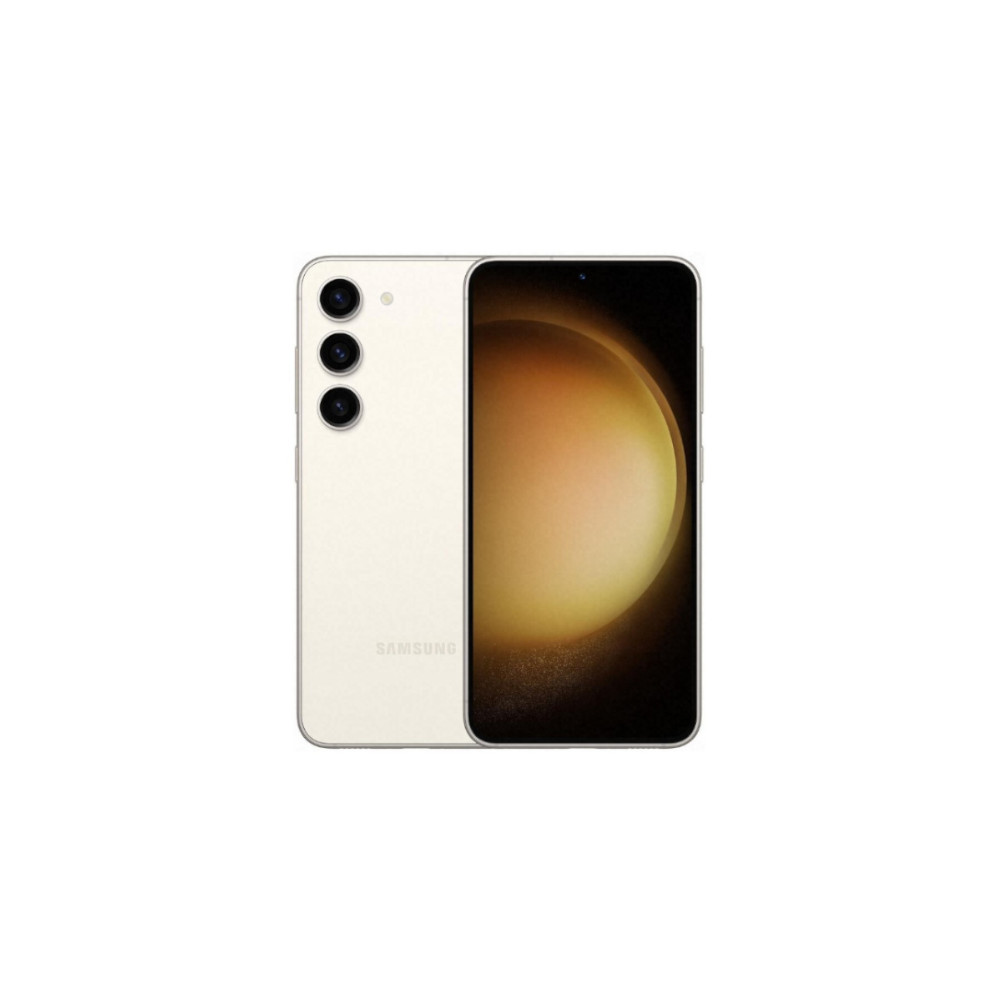Affiliate links on Android Authority may earn us a commission. Learn more.
Samsung Galaxy S23 series battery life: Here's what you need to know
Published onFebruary 15, 2024
Samsung’s flagship Galaxy S23, S23 Plus, and S23 Ultra smartphones won our favor as some of the best Android phones released in 2023. The South Korean giant typically launches three devices every year, each competing in a different price class. In 2022, the S22 series delivered the well-rounded Android experience we’ve come to expect from Samsung, but we were left a bit disappointed with the battery life results.
Luckily, Samsung learned from its mistakes and improved battery life wholesale with the S23 series. So in this article, let’s take a closer look at the runtimes you can expect from each S23 smartphone as well as their respective charging performance.

Snapdragon 8 Gen 2 power
Bigger battery

Beautiful display
S Pen functionality
The Galaxy S23 and S23 Plus feature larger batteries than their respective predecessors. And thanks to other hardware changes, we've recorded significantly better battery life across all three models in our testing. While the smallest phone will comfortably get you a full day off a single charge, we managed to stretch the S23 Ultra to last two full days with eight hours of screen-on time.
As for charging speeds, Samsung is playing it safe and sticking to the same 25W and 45W maximums as last year, depending on the model. Read on for more details.
Samsung Galaxy S23 series battery specs
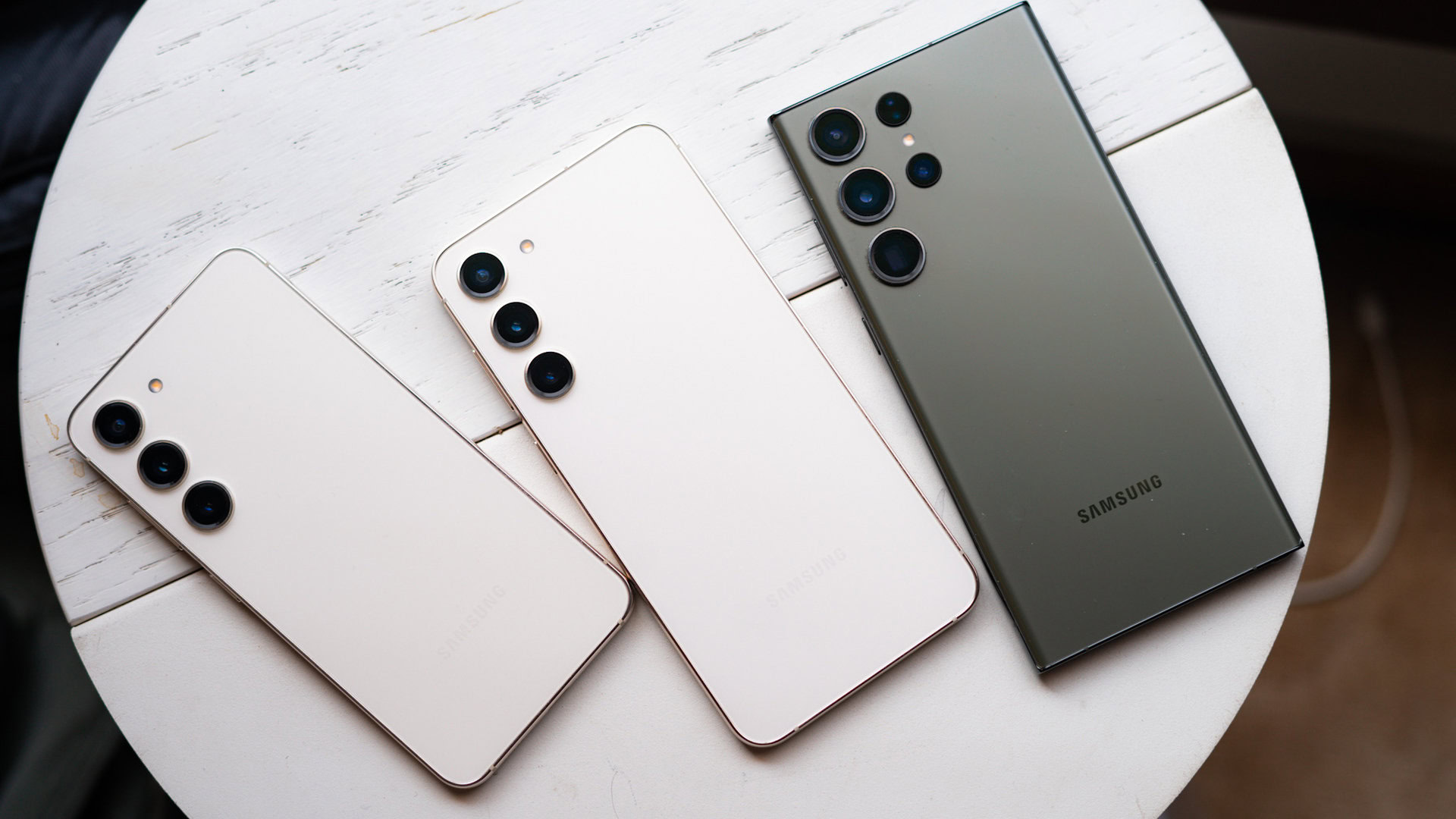
In 2022, Samsung inexplicably reduced the battery capacities of the regular and Plus Galaxy S22 models. Unsurprisingly, many reviewers and users reported a nearly proportional drop in real-world endurance. Luckily, Samsung issued a course correction with the Galaxy S23 series.
| Samsung Galaxy S23 | Samsung Galaxy S23 Plus | Samsung Galaxy S23 Ultra | |
|---|---|---|---|
Battery capacity | Samsung Galaxy S23 3,900mAh | Samsung Galaxy S23 Plus 4,700mAh | Samsung Galaxy S23 Ultra 5,000mAh |
Wired charging | Samsung Galaxy S23 25W fast charging, USB PD PPS | Samsung Galaxy S23 Plus 45W fast charging, USB PD PPS | Samsung Galaxy S23 Ultra 45W fast charging, USB PD PPS |
Wireless charging | Samsung Galaxy S23 Qi wireless charging, up to 15W 4.5W reverse wireless charging | Samsung Galaxy S23 Plus Qi wireless charging, up to 15W 4.5W reverse wireless charging | Samsung Galaxy S23 Ultra Qi wireless charging, up to 15W 4.5W reverse wireless charging |
Charging adapter | Samsung Galaxy S23 Not included in-box, sold separately | Samsung Galaxy S23 Plus Not included in-box, sold separately | Samsung Galaxy S23 Ultra Not included in-box, sold separately |
Galaxy S23 series battery life: What to expect?
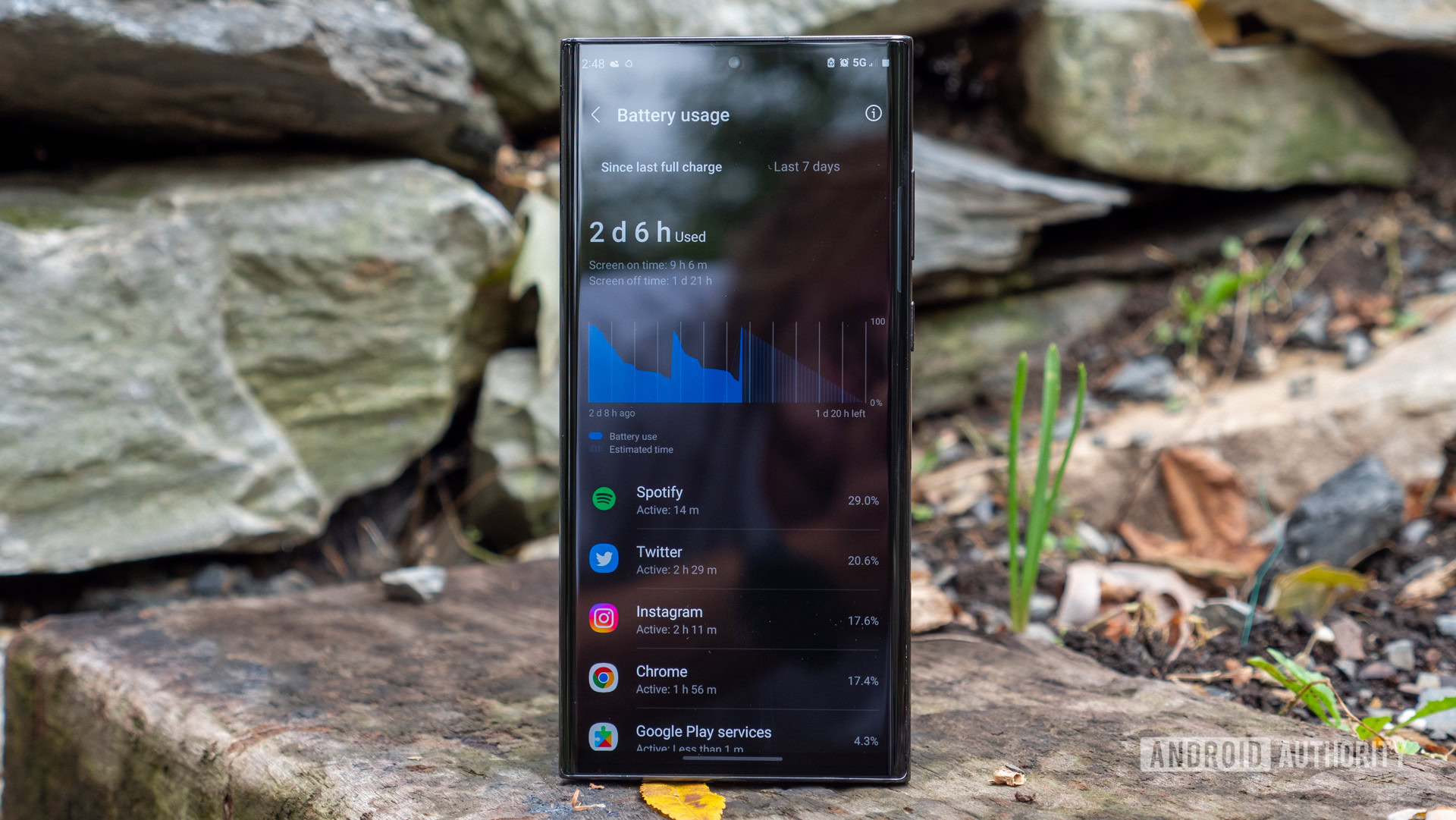
Galaxy S23
The vanilla Samsung Galaxy S23 features a 3,900mAh battery — that’s up 200mAh compared to its predecessor.
After using the Galaxy S22, we criticized it for delivering sub-par battery life — often under four hours of screen-on time in our testing. Even if you stayed away from demanding tasks like navigation or gaming, the phone would rarely last the entire day. Thankfully, the Galaxy S23 has fixed that problem with a larger battery and Qualcomm’s rather efficient Snapdragon 8 Gen 2 chipset.
The vanilla Galaxy S23 gets a larger battery and a more efficient chip, making for an all-day smartphone.
If you take Qualcomm’s claims at face value, the Snapdragon 8 Gen 2 is roughly 40% more efficient than its predecessor. How is that possible? Simply put, this new chip is being made on a more efficient TSMC node (rather than Samsung Foundry).
In our Galaxy S23 review, we found that the smartphone can last the entire day without breaking a sweat — even maintaining 40% headroom at the end of it. That’s not just a big improvement over the previous generation, it’s also a great result for such a diminutive form factor.
All-day gaming or navigation will push the battery to its limits, however, and you will have to recharge every night. For those use cases, we’d recommend the S23 Plus for its larger battery and better heat dissipation.
Galaxy S23 Plus
The middle of the pack Galaxy S23 Plus houses a 4,700mAh battery — a step up from the Galaxy S22 Plus’ 4,500mAh capacity. That’s a smaller upgrade in percentage terms compared to the base Galaxy S23, but it’s still a welcome improvement.
We weren’t nearly as critical of the Galaxy S22 Plus as the vanilla model last year. In fact, it often exceeded our expectations, especially compared to the other two models.
The larger battery in the Galaxy S23 Plus, coupled with the efficiency improvements from the chipset, has resulted in a comfortable two-day smartphone experience. You should get upwards of seven hours of screen-on time over that time, based on our Galaxy S23 Plus review’s findings. This battery life record exceeds much of the Android competition such as Google’s Pixel 7 Pro and is about on par with the iPhone 14 Pro.
Galaxy S23 Ultra
Samsung didn’t give its top-of-the-line Galaxy S23 Ultra a larger battery this generation. At 5,000mAh, however, it already leads most of the flagship smartphone market. Like other S23 models, the Ultra benefits from the new Snapdragon chipset globally. It also uses the latest AMOLED tech from Samsung Display, which likely draws less power and enables longer screen-on times between charges.
With this generation, Samsung has also partnered with Qualcomm to use its chips globally. In other words, the European market won’t have to deal with a potentially inferior Exynos chip as we’ve seen in previous generations. You can expect this single change to result in a big battery life uplift going from a European-spec S22 Ultra to the S23 Ultra.
In our review, we found that the efficiency gains actually delivered noticeable dividends in the real world. More specifically, we were able to extract two full days of battery life out of the Galaxy S23 Ultra, with an impressive screen-on time of eight hours over that period. To put that figure into context, the previous-generation S22 Ultra ended the first day with just 20% charge left under similar usage conditions.
The Ultra model delivers exceptional battery life, thanks to some unexpected hardware upgrades.
That said, we’ve historically found that the Ultra model doesn’t always deliver the longest battery life. The large 6.8-inch QHD+ display might be the culprit here, so consider the Galaxy S23 Plus if you want to squeeze every last bit of longevity.
Does the Galaxy S23 series charge faster vs the Galaxy S22?
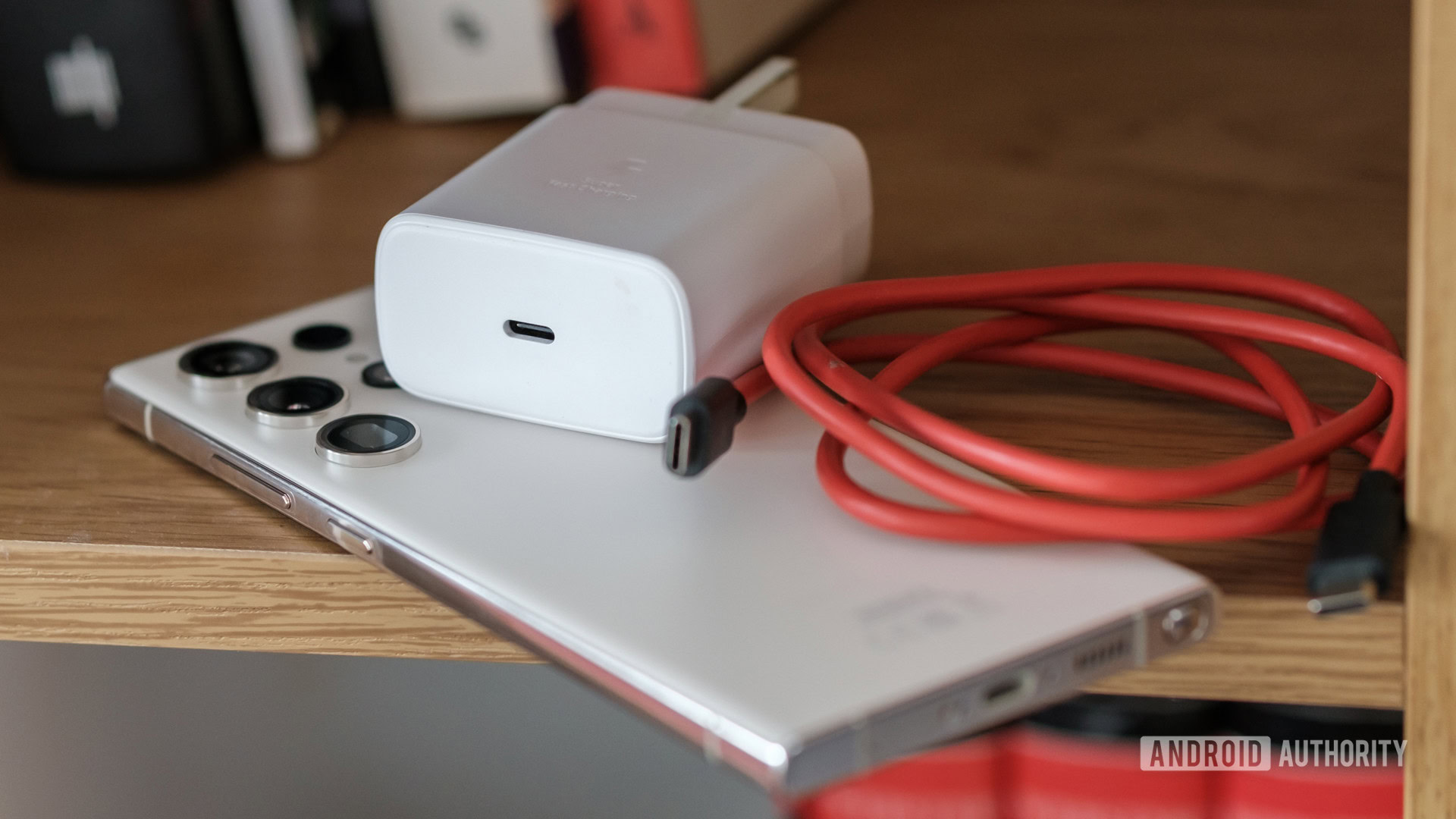
If fast charging matters a lot to you, the Galaxy S23 series might disappoint you. The vanilla Galaxy S23 can handle just 25W of charging power, while the higher-end models peak higher at 45W. These are the same figures as the last-gen Galaxy S22 series, but thankfully, there’s more than what meets the eye. While we found little difference between Samsung’s 25W vs 45W fast charging in the past, that has changed somewhat this generation.
The 45W adapter fully recharges the Galaxy S23 Ultra six minutes faster than its predecessor. It’s not a significant difference, but it does bring the 0-100 time down to under an hour. You’ll still have to bring your own Super Fast Charging adapter as Samsung doesn’t provide one in the box. Alternatively, you can use any third-party brick that supports the USB PD PPS standard.
Samsung hasn't drastically altered charging times this generation, but we recorded a small improvement.
As for wireless charging, Samsung continues to rely on the universal Qi wireless charging standard, which maxes out at 15W. A full charge will take you somewhere between 90 and 120 minutes. We can’t blame Samsung here as the Wireless Power Consortium is still working on the Qi2 charging standard and higher power profiles.
All three Galaxy S23 smartphones also feature reverse wireless charging, or as Samsung calls it: Wireless Power share. The feature allows you to charge another device wirelessly, at a maximum speed of 4.5W. While that’s too slow to fill up another smartphone, it’s handy for short top-ups and charging smaller devices like wearables.
You’ll have to wait over three hours to fully charge a Galaxy Watch 6 or similar wearable using Samsung’s Wireless power sharing. Still, it’s better than nothing — especially if you forget to bring a specific cable or charger while on vacation.
Galaxy S23’s battery tech vs the competition
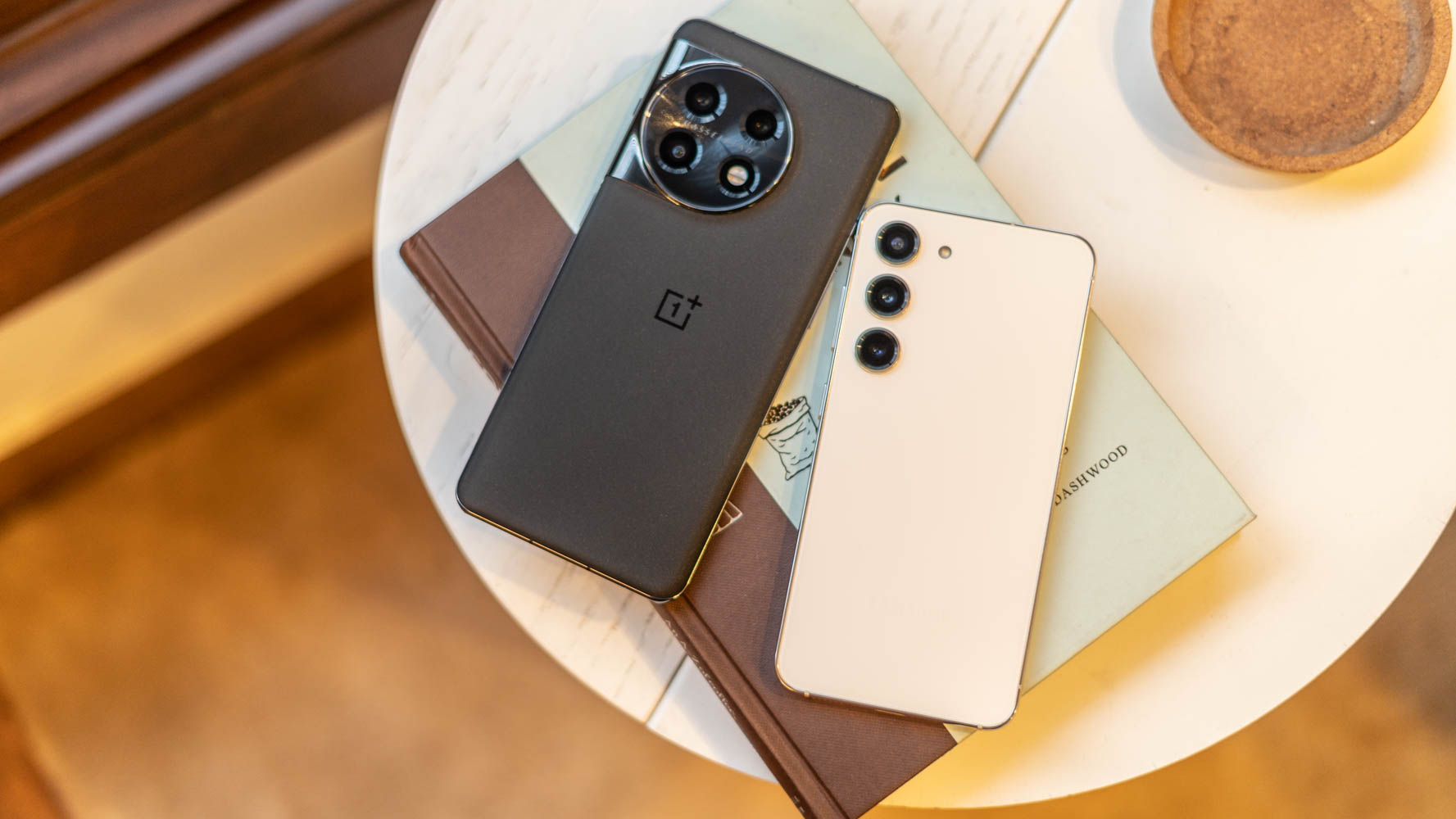
In summary, the top-of-the-line Galaxy S23 Ultra delivers great battery life for almost all use cases. At the very least, it matches or surpasses most other flagship smartphones on the market.
The vanilla Galaxy S23 puts up a strong showing too, even though it doesn’t top the charts. In the compact smartphone segment, we’ve observed better battery life from the similarly-sized ASUS Zenfone 9, thanks to its larger 4,300mAh battery. And if you don’t mind a slightly taller display, the Sony Xperia 5 IV delivers even better endurance with its 5,000mAh battery.
The larger Galaxy S23 models offer competitive battery performance, but the vanilla model hangs in balance.
Unfortunately, you won’t find the Galaxy S23 series breaking any fast charging records. While we appreciate Samsung’s continued commitment to the universal USB PD PPS protocol, most flagship smartphones exceed 25W these days. That’s also true for the larger models, which max out at 45W instead.
Rival manufacturers have delivered faster charging times for years now. The OnePlus 11, for instance, can be fully charged within half an hour. And even though it relies on the proprietary SuperVOOC charging protocol to reach 100W peak power, you at least get an adapter in the box to ease the sting.
Similarly, the Xiaomi 13 Pro charges at a blistering 120W when plugged in or 50W wirelessly. And it’s worth stressing again that both companies also ship a charging adapter in the box — no separate purchase necessary.
That said, if you’re coming from an older Apple or Google smartphone, you won’t find any reason to complain. The three Galaxy S23 models charge about as quickly as the Pixel 8 and iPhone 15 series, even if it’s only a slim victory. Even Samsung’s own Galaxy Z Fold 5 only charges at 25W.
Overall, Samsung’s 2023 flagships may fall short of some enthusiasts’ lofty expectations but still deliver strong battery life and a decent baseline charging performance. If you’re looking for even better battery life, though, consider checking out Samsung’s latest Galaxy S24 series which packs even better battery life despite minimal hardware changes between generations.
FAQs
No, Samsung does not include a charger in the box with any Galaxy S23 series smartphone. You’ll have to buy one separately or use a third-party USB PD PPS adapter.
Yes, our review found that the Galaxy S23 Ultra delivered better battery life than the S22 Ultra even though the hardware capacity hasn’t changed.
You don’t need to buy a new charger for the Galaxy S23 if you already own a Samsung Super Fast Charging adapter or a third-party USB PD PPS adapter.
Samsung says it no longer includes a charger in the box with its smartphones so that it can minimize its environmental impact as many users already own an adapter. Taking out the charging brick also allows Samsung to shrink its packaging and occupy less air or sea cargo space before the phone reaches consumers.
The Galaxy S23 Ultra has a battery capacity of 5,000mAh, unchanged from last generation.
The base Galaxy S23 will last average smartphone users a full day of use, while the larger models will deliver even better endurance.
